Avoid a trip to the grocery store with this simple cake flour substitute. It is a cinch to make with 2 pantry staples and minimal effort. So when you need to bake cake recipes like a soft angel food cake or decadent rum cake but don’t have a box of cake flour on hand, try this easy swap.
For this cake flour recipe, you only need all-purpose flour and cornstarch. When combined using a sifter, this mixture closely resembles the light texture of cake flour. Your cakes will have an incredibly tender crumb, and no one will know you used a cake flour substitute! For more baking substitutes, check out my tutorials for how to make powdered sugar, how to make brown sugar, and how to make buttermilk.
What Is Cake Flour?
Cake flour is a very finely milled, low-protein flour. It is excellent for creating delicate, light, and airy cakes with a moist, soft crumb. The main difference between cake flour, all-purpose flour, and bread flour really comes down to their protein content, which influences how much gluten will form, therefore impacting the texture of the baked goods.
- Cake flour is a soft wheat flour with a low protein content of 7% to 9%, meaning less gluten develops in the cake batter. As a result, you will get cakes that are unbelievably tender with a very fine crumb. Cake flour is very similar to pastry flour, which is also a low-protein flour.
- All-purpose flour (also known as AP flour) is the most commonly used flour, because, as its name suggests, it is the jack-of-all-trades of the flour world. With a protein content between 9% and 12%, it is a moderately robust flour that can be used to make most things from bread to cakes. It is better suited to recipes that require some structure, versus baked goods that are very delicate.
- Bread flour has the most protein, which means it also has the most gluten development of these three types of flour. Bread flour yields baked goods that are perfectly chewy with large crumbs and a stronger texture. It is best used in recipes that need a lot of structure, like artisan bread and sourdough bread.
What You Need To Make Homemade Cake Flour
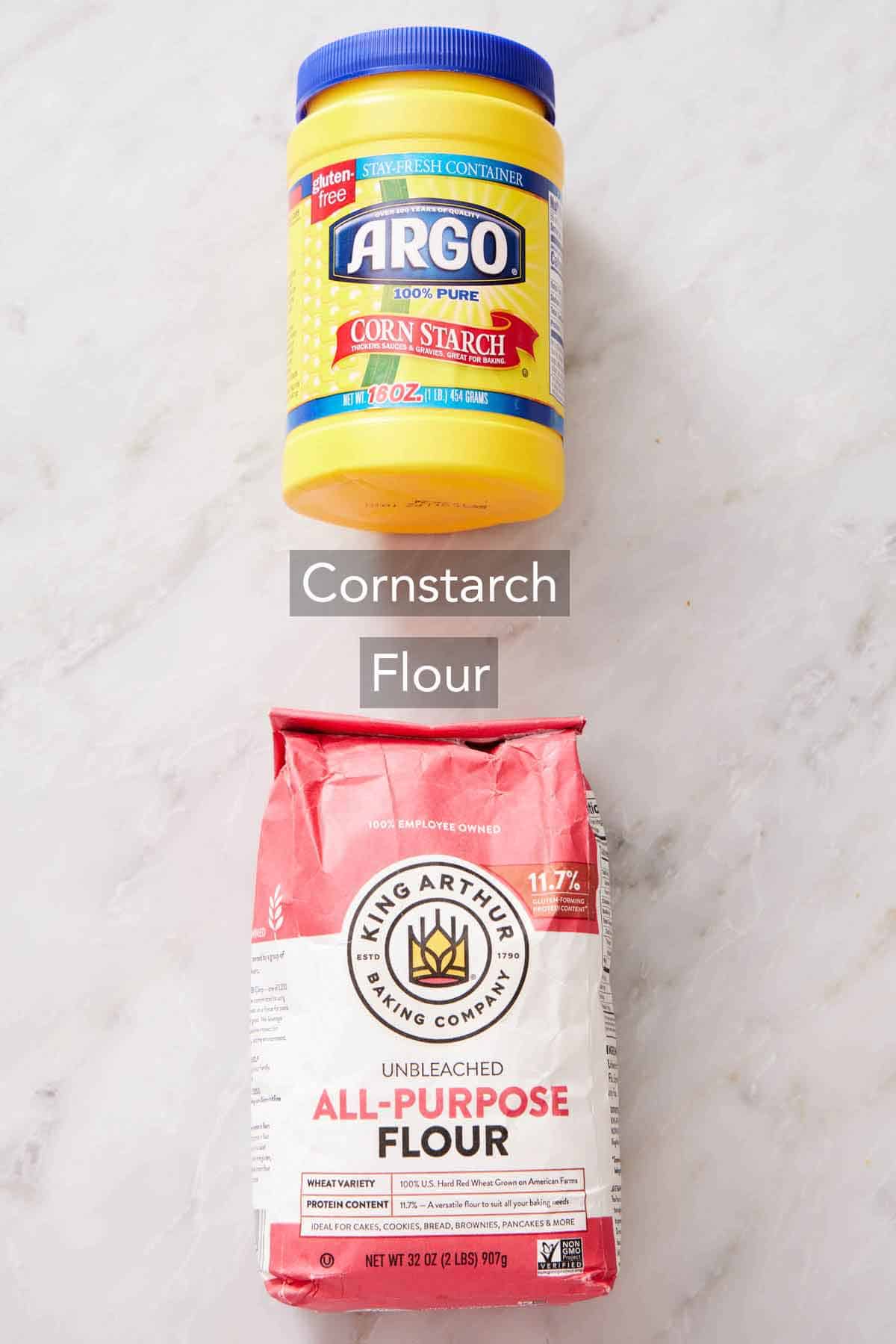
Flour — you need 105 grams of all-purpose flour. This is just under 1 cup of flour. If you don’t have a scale, you can measure out 1 cup of flour, then remove 2 tablespoons of it.
Cornstarch — floury cornstarch helps to lighten all-purpose flour and reduce the overall protein content for a much lighter cake.
How To Make Cake Flour
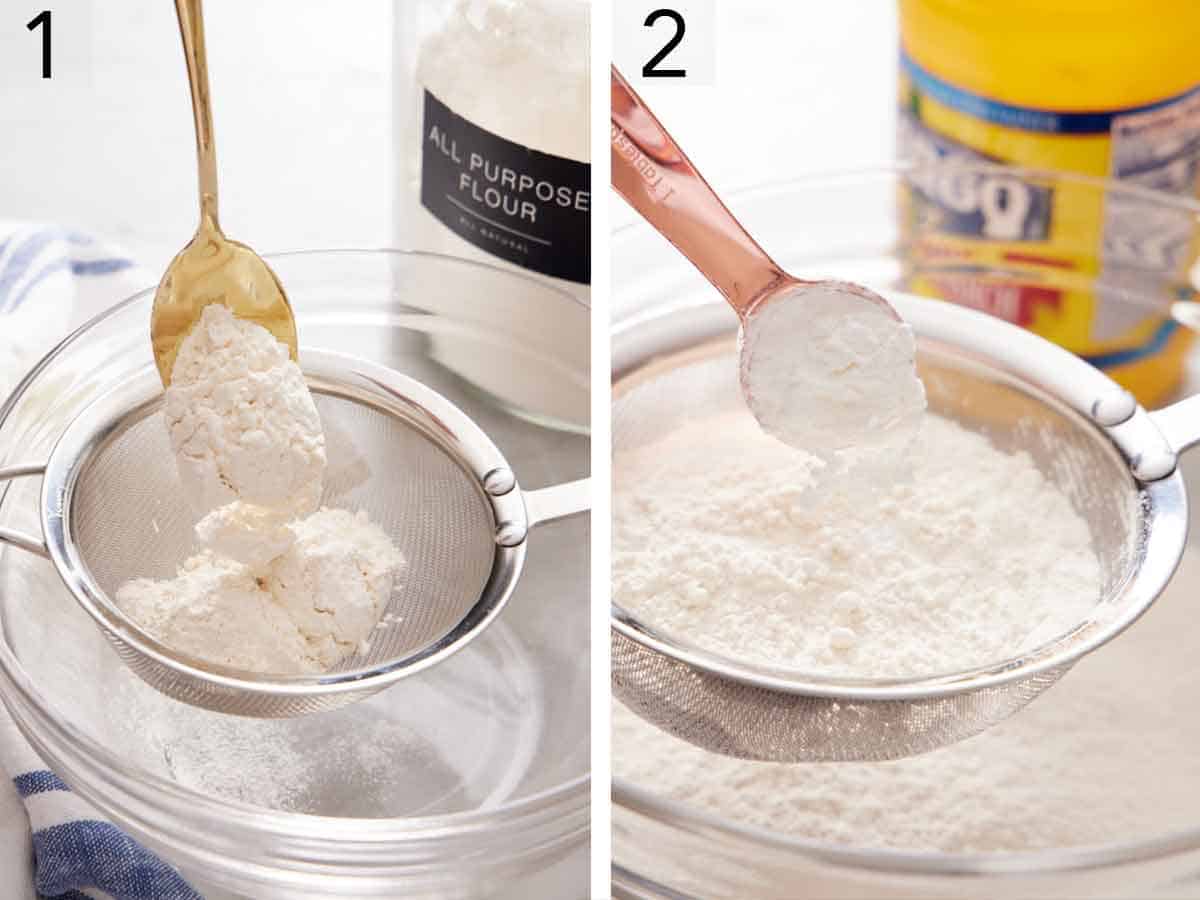
1. Position a wire mesh sifter over a large bowl. Add the all-purpose flour to the sieve.
2. Add the tablespoons of cornstarch and sift together to combine.
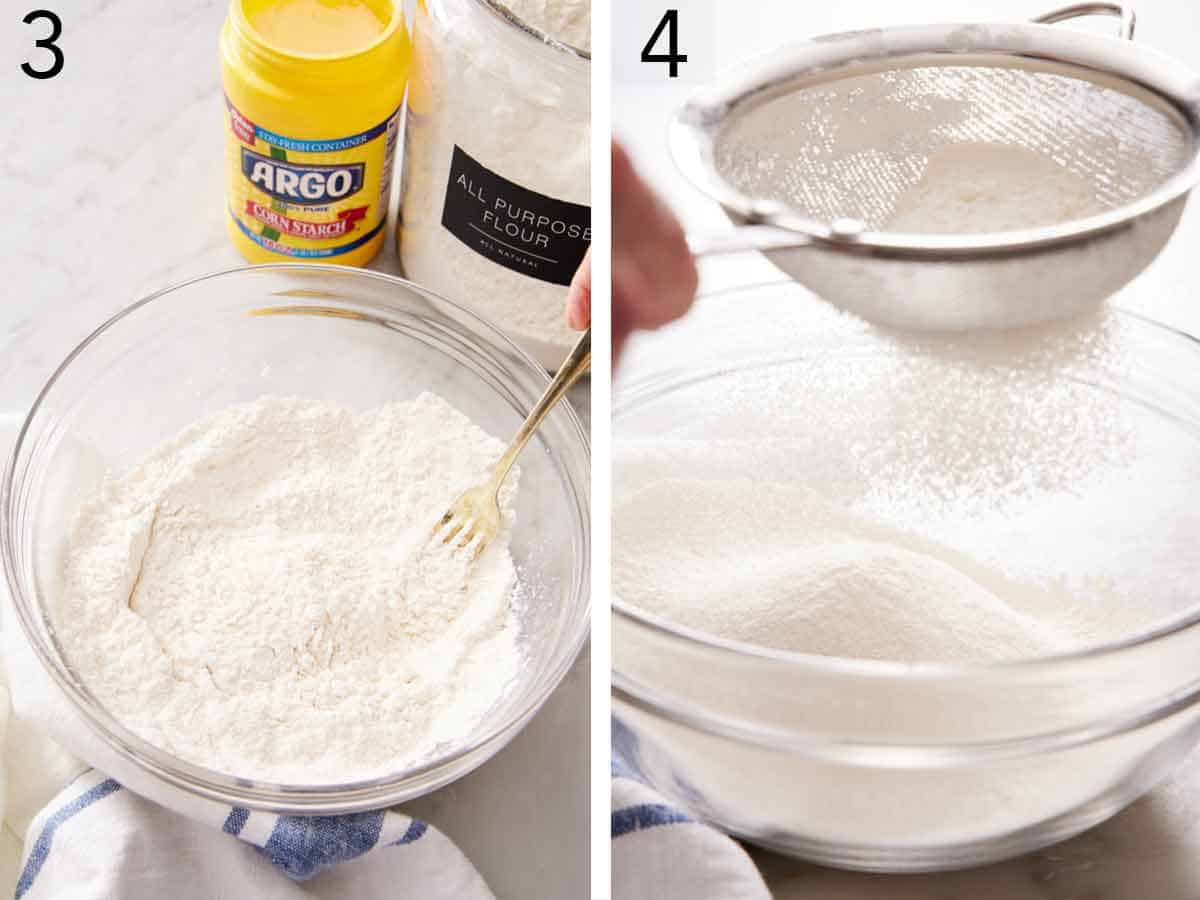
3. Stir the mixture well with a fork.
4. Sift the mixture again to create a fine, airy texture.
Using Cake Flour Versus All-Purpose Flour
Different types of flour shine in different recipes. Cake flour is the best option for recipes that are light, airy, and delicate, such as angel food cake cupcakes. These cakes have a “melt-in-your-mouth” texture and are very soft and tender.
All-purpose flour is good for baked goods that need more structure and strength. Recipes with heavy mixins and a lot of wet ingredients work well with all-purpose flour. Think of quick breads like carrot cake and zucchini bread, which are quite heavy and robust. The flour needs to be strong enough to support the heavier ingredients. While this substitute uses AP flour, the cornstarch lightens it enough to act very similarly to pure cake flour.
How Cake Flour Affects Baking
If you use all-purpose flour in a recipe that calls for cake flour, the texture will be different. In the image below, I made the layers of my chantilly cake recipe (which calls for cake flour) using 3 different types of flour, each producing very different results:
- Cake flour produces a cake with the most velvety, airy texture and very fine, delicate crumbs with a lighter golden edge.
- Cake flour substitute will give you almost identical results to real cake flour, with a texture that is not quite as soft and crumbs that are ever so slightly larger, but it does the job very well!
- All-purpose flour yields a drier, more dense chantilly cake with coarser crumbs, and the edge gets much browner during baking.
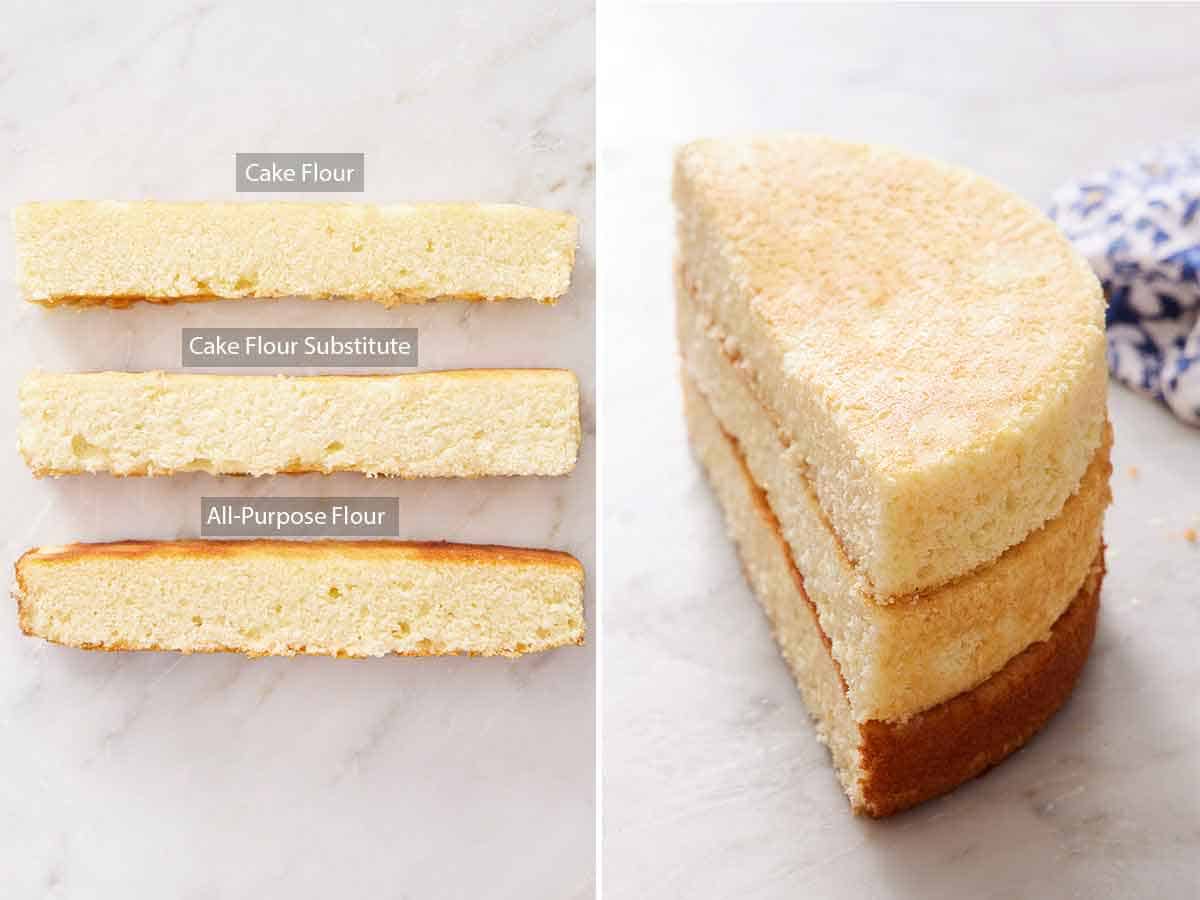
Recipes Using Cake Flour
These are some of my favorite recipes that use cake flour for a light and tender texture, even donuts!
Pro Tips For DIY Cake Flour
- Weigh the ingredients. Weighing the AP flour and cornstarch will give you the most accurate measurements, so the cake flour substitute has just the right texture. You need 105 grams of all-purpose flour and 10 grams of cornstarch.
- Use cornstarch, not cornmeal. They are completely different ingredients. Cornstarch is a light, velvety powder commonly used as a thickening agent. Cornmeal is a coarse flour made from ground corn kernels and is used in cornbread.
- Storage: You can store this cake flour substitute in an airtight container until ready to use. Sift it again before using if it’s stored for more than a few days.
- Scale the recipe up. You can easily make a large batch of homemade cake flour substitute by scaling the recipe up, sifting it all together, and then measuring out the amount of cake flour needed for the recipe from the big batch.
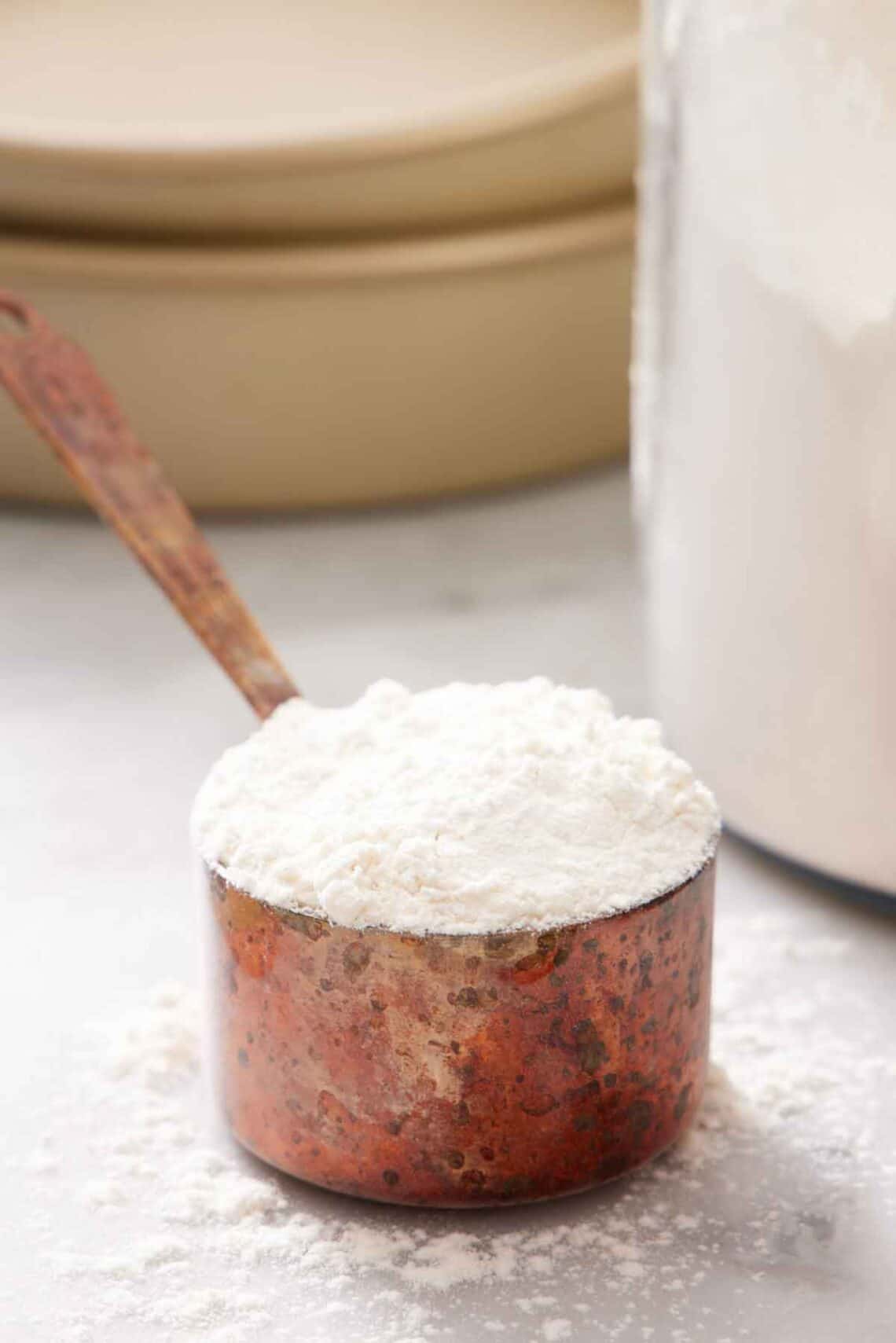
Frequently Asked Questions
No, cake flour weighs less than all-purpose flour: 1 cup of cake flour weighs 112 grams, while 1 cup of AP flour weighs 120 grams.
It’s best to use the flour a recipe calls for since that recipe was formulated and tested using a specific type of flour. But if you want to try using cake flour instead of all-purpose flour, be sure to follow the gram-weight measurements or use this volume formula: Use 1 cup plus 2 tablespoons of cake flour per 1 cup of all-purpose flour.
Keep in mind that using cake flour in certain recipes may cause whatever you are baking to collapse or fall apart because it can’t provide the necessary support due to having less protein than AP flour. If you want to try a swap, make my vanilla cake or white cake with cake flour substitute for super light and airy layers!
I don’t recommend this. Bread flour has much more protein than cake flour, so it will be very difficult to recreate cake flour’s light and airy texture using bread flour.
If you’ve tried this cake flour recipe, then don’t forget to rate it and let me know how you got on in the comments below. I love hearing from you!
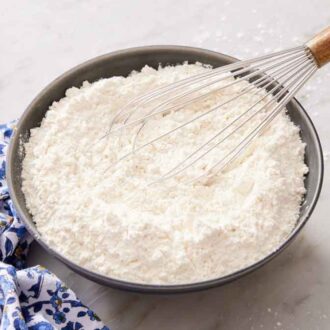
Cake Flour Substitute Recipe
Ingredients
- ¾ cup + 2 tablespoons all-purpose flour (105g)
- 2 tablespoons cornstarch (10g)
Instructions
- Place a wire mesh sifter over a large bowl. Add the flour and cornstarch and sift it together to combine.
- Stir the mixture well to ensure the cornstarch and flour are evenly combined, and sift the mixture again to create a fine, airy texture.
- You can store the cake flour substitute in an airtight container until ready to use. Sift it again before using it if stored for more than a few days.
Notes
- Weigh the ingredients. Weighing the AP flour and cornstarch will give you the most accurate measurements, so the cake flour substitute has just the right texture. You need 105 grams of all-purpose flour and 10 grams of cornstarch.
- Use cornstarch, not cornmeal. They are completely different ingredients. Cornstarch is a light, velvety powder commonly used as a thickening agent. Cornmeal is a coarse flour made from ground corn kernels and is used in cornbread.
- Storage: You can store this cake flour substitute in an airtight container until ready to use. Sift it again before using if it’s stored for more than a few days.
- Scale the recipe up. You can easily make a large batch of homemade cake flour substitute by scaling the recipe up, sifting it all together, and then measuring out the amount of cake flour needed for the recipe from the big batch.



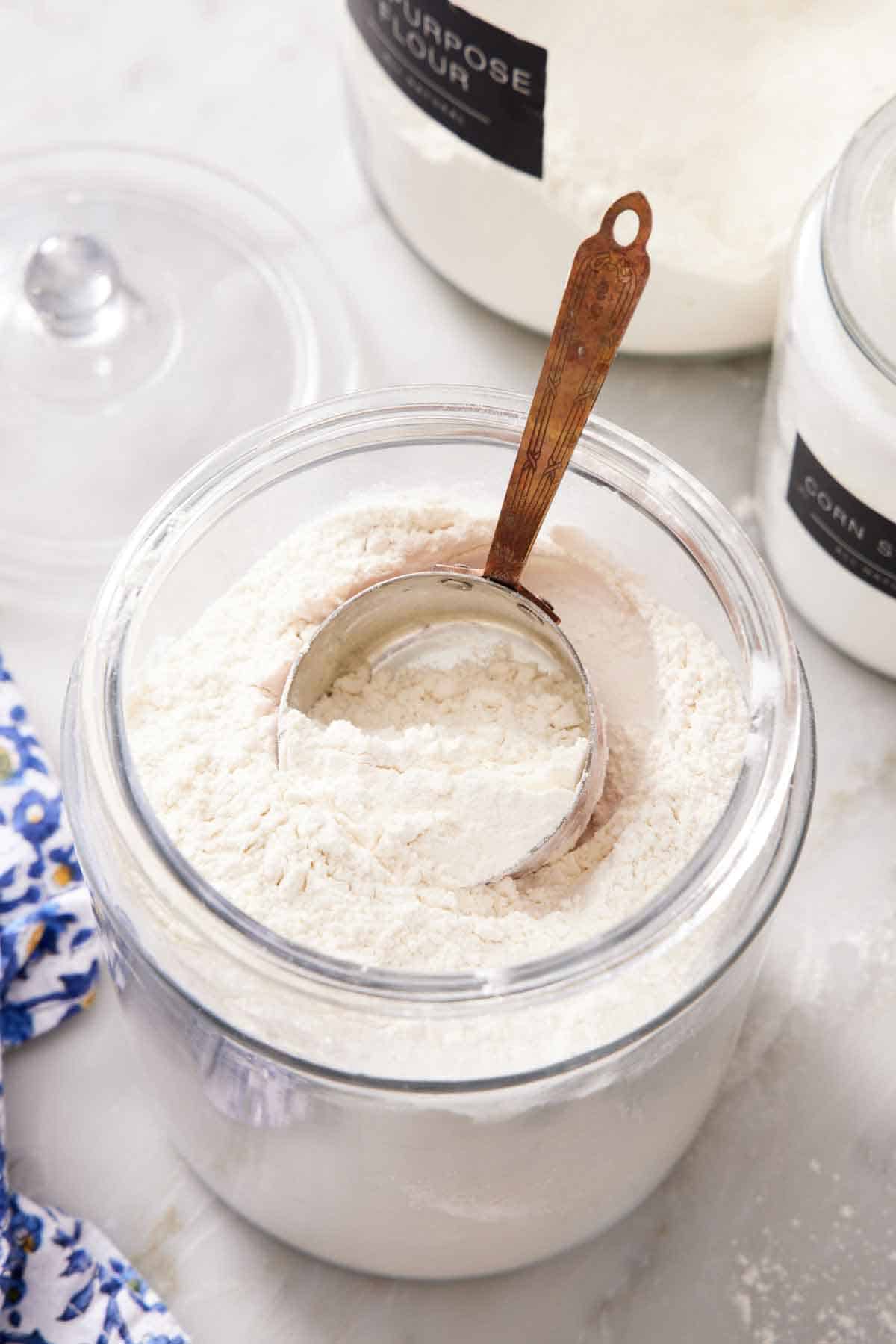
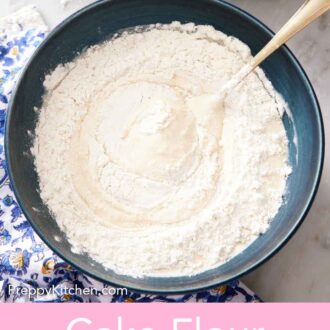
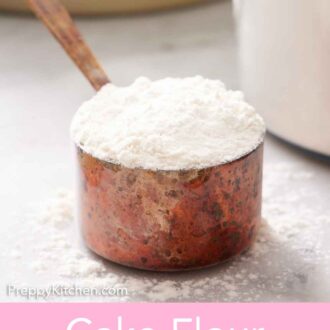
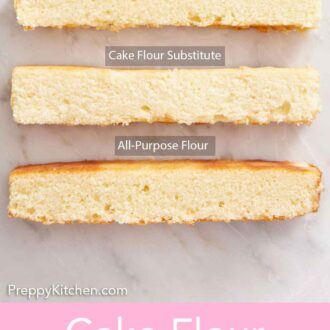
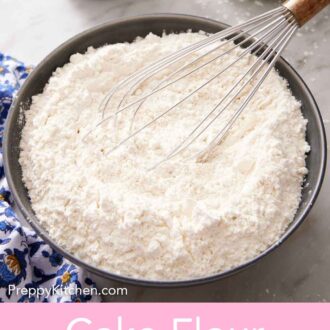
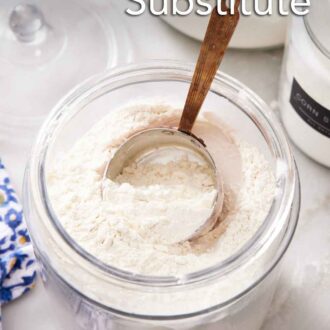
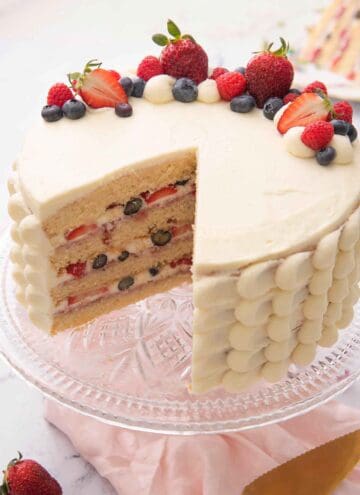
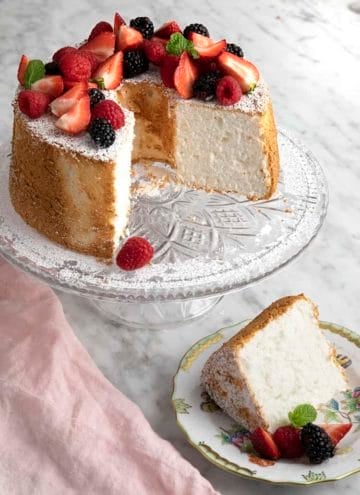
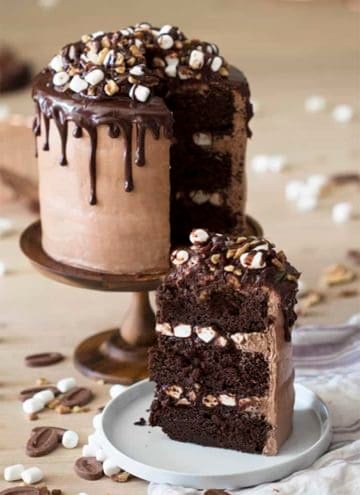
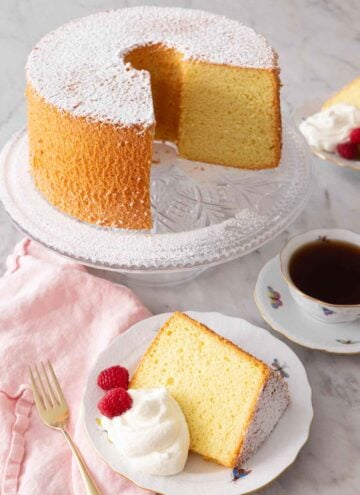
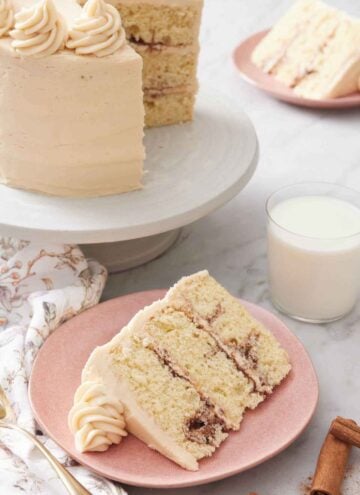

Leave a Reply